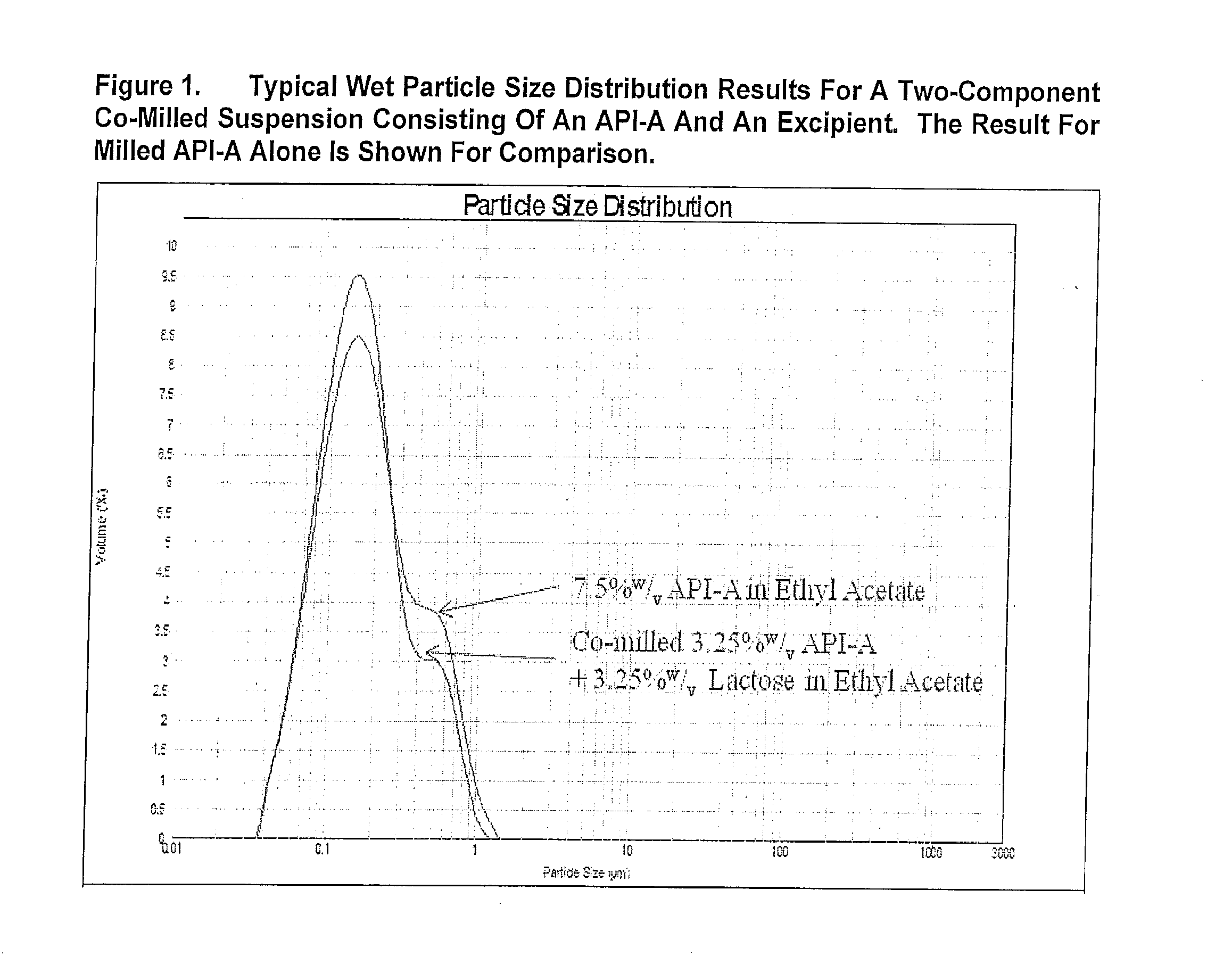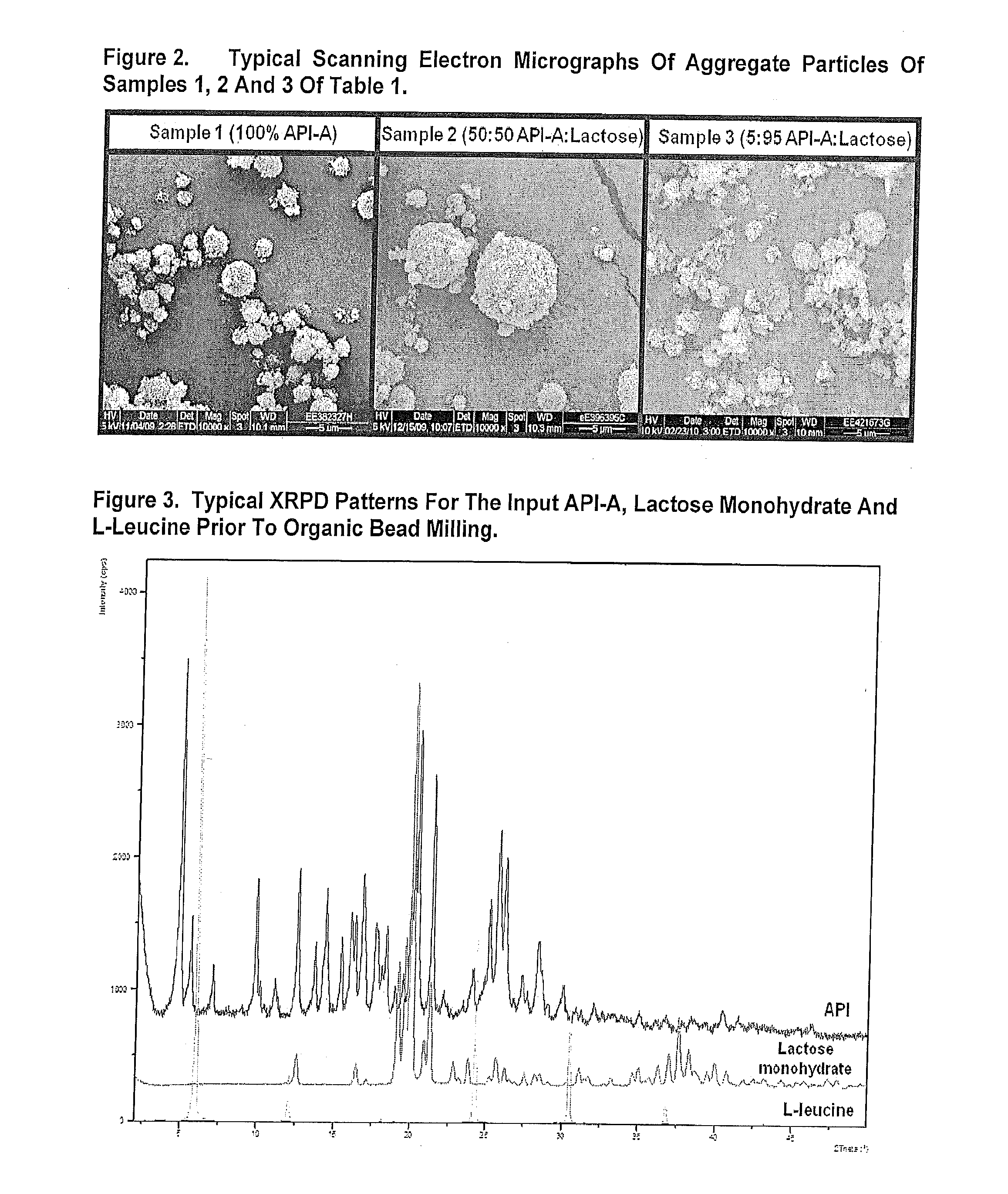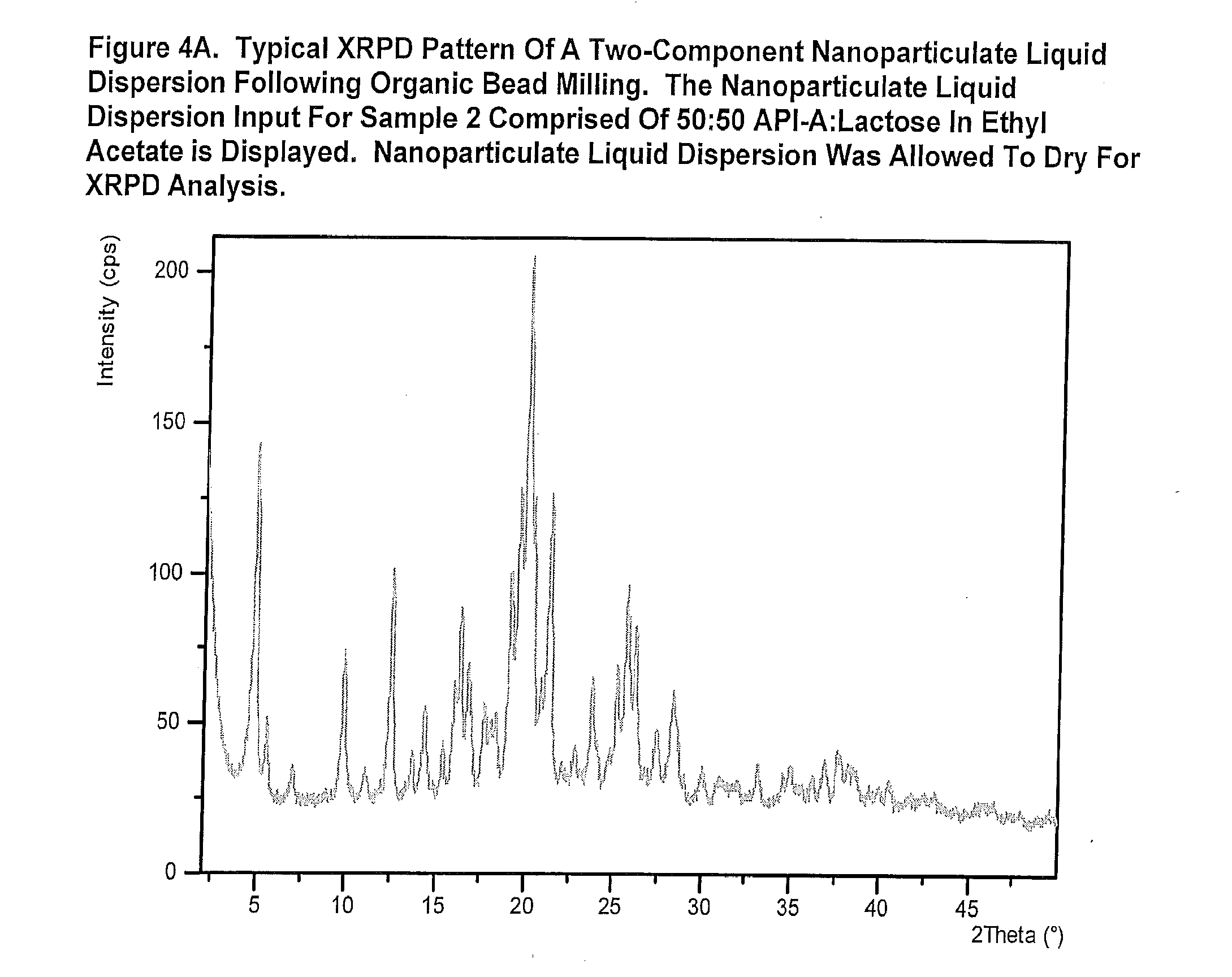Aggregate nanoparticulate medicament formulations, manufacture and use thereof
a technology of nanoparticulate and medicament formulation, which is applied in the field of powder compositions, can solve the problems of reducing the product performance upon storage, affecting the safety of use, so as to reduce the risk of conversion, prolong the shelf life, and reduce the effect of dose uniformity
- Summary
- Abstract
- Description
- Claims
- Application Information
AI Technical Summary
Benefits of technology
Problems solved by technology
Method used
Image
Examples
example 1
[0342]The purpose of this example was to demonstrate the technique of manufacturing two-component respiratory particles comprised of nanoparticulate drug and nanoparticulate excipient. Samples 2-7 and 9 in Table 1 utilized a co-milling approach, in which both the drug and excipient were milled together in the bead mill to produce the feedstock suspension (Tables 1 and 4).
[0343]Sample 8 was prepared by milling the drug and excipient separately. The drug and excipient suspensions were then admixed in a suitable container and well stirred.
[0344]Suspensions were diluted down to 5% w / v with vehicle prior to spray drying.
[0345]FIG. 1 presents the typical wet PSD results for bead milled API and a two-component suspension system consisting of drug (API) and an excipient. Following bead milling, the majority of suspension particles were less than 1 micron.
[0346]FIG. 2 displays typical SEM micrographs of the spray dried particles. Images of samples 1-3 are displayed. Particles were generally ...
example 2
[0350]The purpose of this example was to demonstrate the technique of manufacturing two-component respiratory particles comprised of nanoparticulate drug and a binder. Samples 10 through 13 were produced by bead milling drug, then adding a solution of binder to the nanosuspension prior to spray drying. Suspensions were diluted down to 5% w / v with vehicle prior to spray drying.
[0351]FIG. 5 displays typical SEM micrographs of the spray dried particles. Similarly to Example 1, the spray dried particles were spherical to irregular in shape. Table 5 lists the PSD results for the samples. Following spray drying, the two-component particles were within the respirable size range. No significant difference in PSD was observed with increasing binder concentration. Compared to the controls, the performance of samples 10 through 13 was improved.
example 3
[0352]The purpose of this example was to demonstrate the technique of manufacturing three-component respiratory particles comprised of nanoparticulate drug, nanoparticulate excipient and a binder. Samples 14 through 17 are illustrative cases. DPPC was used as the binder in these samples.
[0353]Samples 14, 15 and 17 used a co-milling approach in which the drug and excipient was bead milled together. A solution of DPPC binder was added to the nanosuspension mixture prior to spray drying.
[0354]Sample 16 was manufactured using an alternative approach in which the drug and excipient were bead milled separately. The nanosuspensions were then combined along with a solution of DPPC binder just before spray drying to produce the feedstock.
[0355]Suspensions were diluted down to 5% w / v with vehicle prior to spray drying.
[0356]FIG. 6 displays typical SEM micrographs of the spray dried particles. Similarly to Example 1, the spray dried particles were spherical to irregular in shape. The PSD resul...
PUM
| Property | Measurement | Unit |
|---|---|---|
| solubility | aaaaa | aaaaa |
| mass median aerodynamic diameter | aaaaa | aaaaa |
| aerodynamic size | aaaaa | aaaaa |
Abstract
Description
Claims
Application Information
 Login to View More
Login to View More - R&D
- Intellectual Property
- Life Sciences
- Materials
- Tech Scout
- Unparalleled Data Quality
- Higher Quality Content
- 60% Fewer Hallucinations
Browse by: Latest US Patents, China's latest patents, Technical Efficacy Thesaurus, Application Domain, Technology Topic, Popular Technical Reports.
© 2025 PatSnap. All rights reserved.Legal|Privacy policy|Modern Slavery Act Transparency Statement|Sitemap|About US| Contact US: help@patsnap.com



